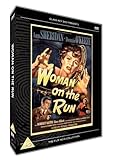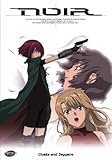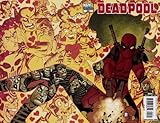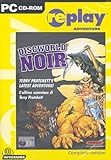Noir Luxe Pouch for iPhone 3G / 3GS – Yellow

Product Description
These cases are handcrafted from the finest soft leather and should not be confused with cheaper style cases. Every case is hand stitched together, then sealed to prevent the tearing at the seams
- Noir Luxe Pouch for iPhone 3G / 3GS – Yellow
The Film Noir Collection – Woman On The Run
Farewell My Lovely

Amazon.co.uk Review
Of all the Philip Marlowes, Robert Mitchum’s in Farewell, My Lovely resonates most deeply. That’s because this is Marlowe past his prime, and Mitchum imbues Raymond Chandler’s legendary private detective with a sense of maturity as well as a melancholy spirit. And yet there is plenty of Mitchum’s renowned self-deprecating humour and charismatic charm to remind us of his own iconic presence. As in the previous 1944 film version, Murder, My Sweet, Marlowe searches all over L.A. for the elusive girlfriend of ex-con Moose Malloy, a loveable giant who might as well be King Kong. In typical Chandler fashion, the weary Marlowe uncovers a hotbed of lust, corruption and betrayal. Like Malloy, he’s disillusioned by it all, despite his tough exterior, and possesses a tinge of sentimentality for the good old days. About the only current dream he can hold onto is Joe DiMaggio and his fabulous hitting streak. Made in 1975, a year after Chinatown (shot by the same cinematographer, John Alonzo), Farewell, My Lovely is more straightforward and nostalgic, but still possesses a requisite hard-boiled edge, and the best kind of angst the 1970s had to offer. (By the way, you will notice Sylvester Stallone in a rather violent cameo, a year before his Rocky breakthrough.) –Bill Desowitz, Amazon.com
The Dark Mirror: Psychiatry and Film Noir
Scarlet Street
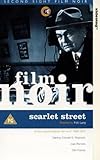
Amazon.co.uk Review
In a way, Scarlet Street is a remake. It’s taken from a French novel, La Chienne (literally, “The Bitch”) that was first filmed by Jean Renoir in 1931. Renoir brought to the sordid tale all the colour and vitality of Montmartre; Fritz Lang’s version shows us a far harsher and bleaker world. The film replays the triangle set-up from Lang’s previous picture, The Woman in the Window, with the same three actors. Once again, Edward G Robinson plays a respectable middle-aged citizen snared by the charms of Joan Bennett’s streetwalker, with Dan Duryea as her low-life pimp. But this time around, all three characters have moved several notches down the ethical scale. Robinson, who in the earlier film played a college professor who kills by accident, here becomes a downtrodden clerk with a nagging, shrewish wife and unfilled ambitions as an artist, a man who murders in a jealous rage. Bennett is a mercenary vamp, none too bright, and Duryea brutal and heartless. The plot closes around the three of them like a steel trap. This is Lang at his most dispassionate. Scarlet Street is a tour de force of noir filmmaking, brilliant but ice-cold.
When it was made the film hit censorship problems, since at the time it was unacceptable to show a murder going unpunished. Lang went out of his way to show the killer plunged into the mental hell of his own guilt, but for some authorities this still wasn’t enough, and the film was banned in New York State for being “immoral, indecent and corrupt”. Not that this did its box-office returns any harm at all.
On the DVD: sparse pickings. There’s an interactive menu that zips past too fast to be of much use. The full-length commentary by Russell Cawthorne adds the occasional insight, but it’s repetitive and not always reliable. (He gets actors’ names wrong, for a start.) The box claims the print’s been “fully restored and digitally remastered”, but you’d never guess. –Philip Kemp

